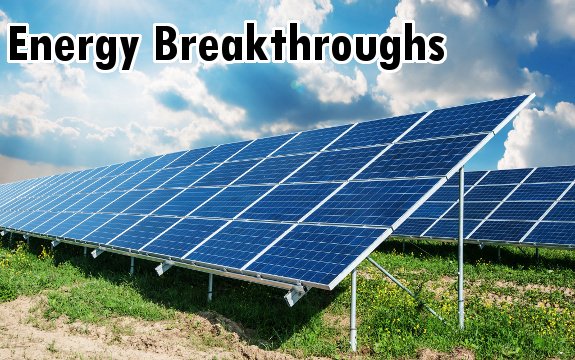Major Energy Breakthroughs of 2013: The Year of Clean Energy Advances

 When it comes to energy, humans power our homes, our vehicles, and so much more by consuming fossil fuels. While a good source, fossil fuels are finite and their consumption wreaks havoc on our environment. Over the past year, numerous advances have been made in energy alternatives.
When it comes to energy, humans power our homes, our vehicles, and so much more by consuming fossil fuels. While a good source, fossil fuels are finite and their consumption wreaks havoc on our environment. Over the past year, numerous advances have been made in energy alternatives.
Clean energy is sustainable energy, or that which meets our present needs without compromising the health of the environment and without hurting the ability of future populations to meet their own energy needs. Sources of clean energy include solar power, wind energy, wave energy, and hydroelectricity, just to name a few.
In a recent year-end recap, AlterNet discussed 13 advances of 2013 in the world of clean energy—advances that make a “zero-carbon future” more of a possibility.
Those advances include:
- Electric car batteries with the ability to power buildings. Part of Nissan’s “Vehicle-To-Building” program, this technology allows buildings to tap into electronic vehicles connected in their garages when electricity demands are high.
- Using salt to produce solar power. No that isn’t a typo—the Department of Energy’s loan program has helped fund a solar plant from Solana in Arizona. This plant uses a salt battery to keep it running after the sun goes down.
- Expanding the use of tidal energy. The nation’s first commercial tidal turbine has been successfully generating clean energy off the coast of Maine for a year. Now, the Ocean Renewable Power Company is set to deploy two more devices in 2014.
Read: Emergency Water – 4 Ways to Enjoy Clean Water Anytime
- Increased conversion efficiency in solar cells. Conversion efficiency is the term that refers to the amount of solar power that’s actually transferred into electricity, and it usually runs at around 18.7%. This past year, a Silicon Valley company, Alta Devices, was able to set a new record of 30.% conversion. The result, according to AlterNet, is a “extremely thin solar cell that can generate a lot of electricity from a small surface area,” making it perfect for mobile phones, alarms, personal computers and more.
- Floating wind farms offshore. Though the wind is strong just off shore, making it ideal for power-generating wind turbines, they require expensive construction and are normally limited to area where water is 60 meters deep or less. In 2013, however, a Norweigian-based energy company created a hub of floating wind turbines off the coast of Scotland, where only a few cables are required to anchor them and they can be placed in water up to 700 meters deep.
These aren’t the only advances—using plant waste for clean energy, turning to direct current (DC) rather than alternative current (AC), and making more powerful and safer batteries were also among the 2013 clean energy achievements.

Read ”
Nuclear Energy, the Unforgiving Technology” by Fred H. Knelman, 1976